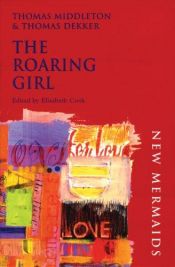The Roaring Girl (New Mermaids)
Blurb
Middleton and Dekker’s comic triumph is as relevant today as when it was first performed in 1611. With its helpful annotations, historical documents on cross dressing and on the colorful Mary Frith (the real-life model for Moll Cutpurse), and wealth of scholarly interpretations, this Norton Critical Edition brings The Roaring Girl to life for today’s reader.
This Norton Critical Edition of Thomas Middleton and Thomas Dekker’s The Roaring Girl is based on the text from English Renaissance Drama: A Norton Anthology. It is accompanied by generous explanatory annotations, five illustrations, and a detailed introduction.“Contexts” is thematically arranged to include almost all known documents from the period concerning Mary Frith (aka Moll Cutpurse), among them records of her court appearances, letters recounting the same, and her last will. Also reprinted are significant passages from her purported 1662 “autobiography,” The Life and Death of Mrs. Mary Frith. While of dubious veracity, the “autobiography” is useful for comparing the play’s portrayal of Moll with later developments in Moll Cutpurse lore, which the Norton Critical Edition traces through the eighteenth and nineteenth centuries. Perhaps most engaging for classroom discussion are substantial excerpts from the 1620 cross-dressing pamphlets―Hic Mulier; or, The Man-Woman and Haec Vir; or, The Womanish Man―which appear in annotated, modern-spelling versions. Together they give insight into how gender-bending trends in clothing, similar to those practiced by Moll, were understood in the early seventeenth century. A related passage from A Sermon of Apparel adds another perspective on cross-dressing practices.
Fourteen critical essays chart the development of scholarly interest in The Roaring Girl, from the first half of the twentieth century, when the play received only passing reference, through the work on city comedy in the 1970s and 1980s, to the explosion of analyses in the late 1980s and 1990s, when the play became a major focus for early modern gender studies. The more recent critical essays move beyond a strict focus on gender and cross-dressing to explore The Roaring Girl’s depiction of other aspects of early modern London, including consumer culture and the contemporary fascination with the language of the criminal underworld. Contributors include, among others, T. S. Eliot, Alexander Leggatt, Mary Beth Rose, Jonathan Dollimore, Jean E. Howard, and Jonathan Gil Harris.
A Selected Bibliography is also included.

 English
English Español
Español Deutsch
Deutsch
Member Reviews Write your own review
Be the first person to review
Log in to comment